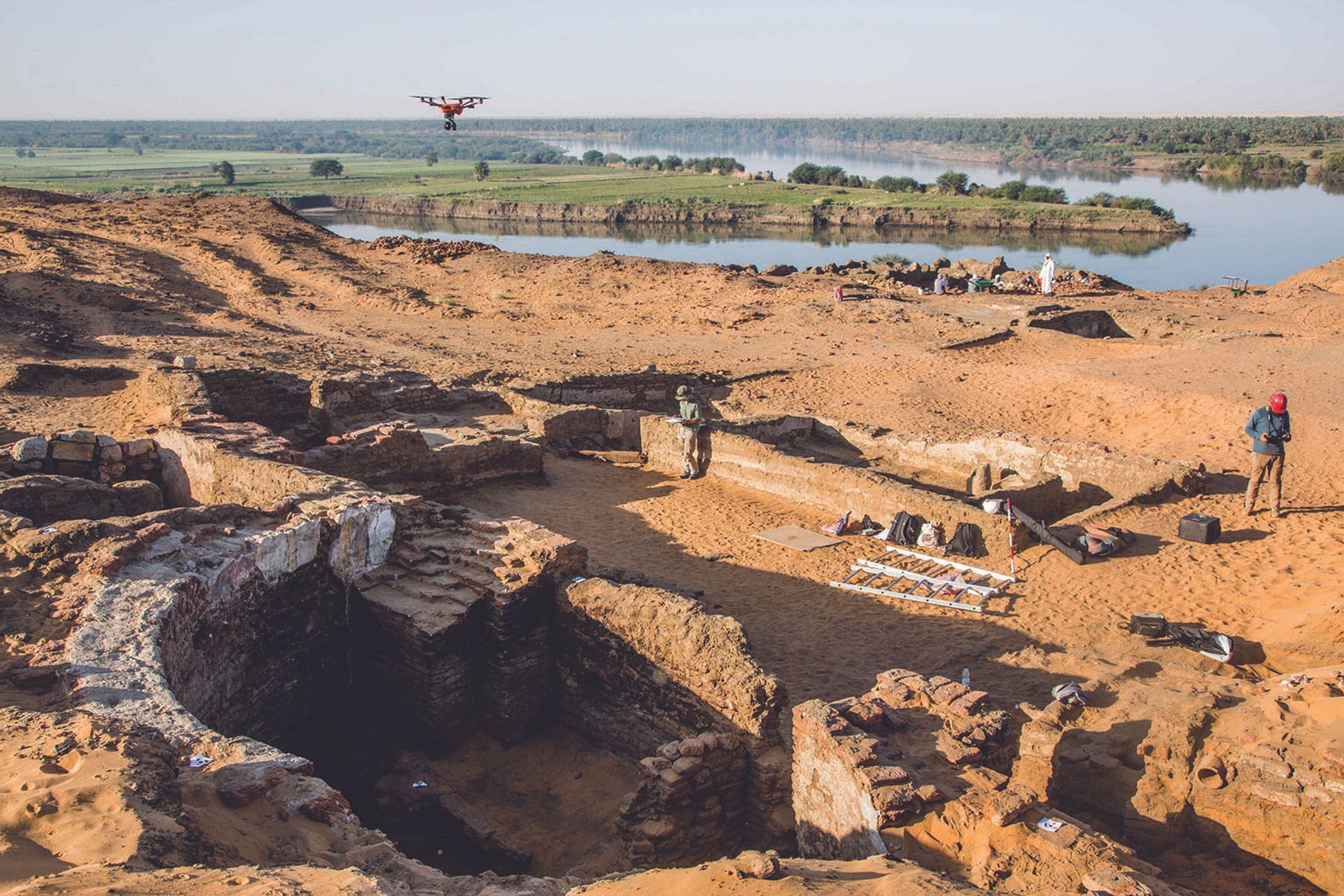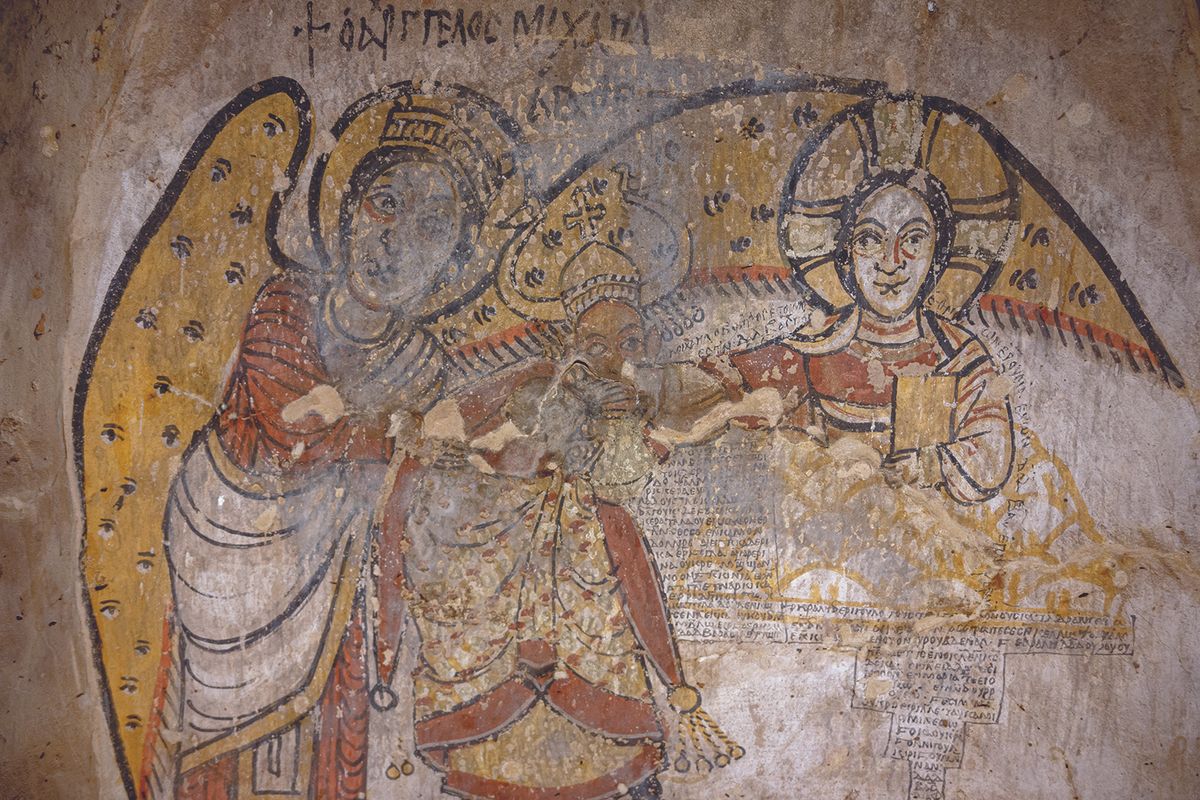Early on the morning of Saturday 14 April, shortly after the call to prayer, residents of the Sudanese capital of Khartoum heard mortar and artillery fire as intense fighting broke out between the country’s state military, headed by general Abdel Fattah al-Burhan, and a paramilitary group known as the Rapid Support Forces (RSF) inspired by a rival general called Mohamed Hamdan Dagalo.
The fierce street fighting has placed the African country’s transition to democracy in grave danger. But the violence has also threatened another precious thing. For, deep in the country’s desert sands, a team of Polish-led archaeologists have been feverishly working in Old Dongola, an ancient city in what is now Sudan’s Northern State. There, the archaeologists have uncovered a unique trove of ancient Christian art, including examples of Christian iconography that have never been seen before.
In the sixth century, Old Dongola was the heavily fortified urban centre of the Coptic kingdom of Makuria, a Nubian dynasty that, at its peak, was as large as Spain and France combined. The city was a thriving cultural citadel powered by close trading ties with the Egyptian empire, whose merchants would arrive on ships along the Nile. It was considered a seat of power for Christian archbishops.
“The site is not threatened, at least for now. But one never knows in which direction a situation like this will go in Sudan,” says the Polish archaeologist Artur Obłuski. “Old Dongola is about 300km north of Khartoum, the main theatre of struggle for power in this poor country. We built a campus next to the site and have offered it to families we know from Khartoum. They can seek refuge there.”
Finding a hidden tomb
Obłuski is a specialist in Christian Nubia and director of the Polish Centre of Mediterranean Archaeology at the University of Warsaw (PCMA UW). Over the last few months, his team discovered a hidden complex of rooms full of ancient Christian iconography. He thinks the art may have been created to aid the king of Makuria in his hour of need.
The rooms were “unexpectedly stumbled upon” as Obłuski’s team excavated beneath what were once private homes from the Funj period (16th-19th century). The homes were situated close to the largest Nubian Christian church ever found in the region. The church was discovered only three years ago with the use of remote sensing techniques, and has since been identified as a Great Church of Jesus.
“We think the chambers could have been a commemorative complex devoted to the Makurian elite, if not the royal family,” Obłuski says.
One of the chambers is shaped like a tomb and decorated with wall paintings and inscriptions that suggest the chamber was originally used as part of the church—a place where Eucharist offerings were carefully stored. “They include Greek inscriptions containing the Liturgy of the Presanctified Gifts,” Obłuski says, referring to the Christian ritual of Lent, during which communion is received from gifts that represent the body and blood of Christ.

The ruins of Dongola, where the wall paintings were found in underground chambers © PCMA UW
To the south, the archaeologists discovered two other chambers covered with wall paintings and, to the west, a larger room that was once covered with a dome. Work is ongoing on each room, and Obłuski hopes to excavate each of them by the autumn if the archaeologists are able to resume their work safely.
Obłuski’s priority is a wall painting in the tomb-like room which has never been witnessed in Christian iconography worldwide. According to Obłuski, the painting is unique and could change our understanding of how Makuria, and Christian faith as a whole, rose and fell in what is now modern Sudan.
“Most of the scholars of the Byzantine period and art from this era disregard Nubian civilisation as an African periphery which is not worthy of wider attention,” Obłuski says.
The wall painting portrays the archangel Gabriel embracing a royal figure who is himself kissing the hand of Jesus, emerging from a cloud. “When mortals are in contact with saints or Christ, especially in Late Antique art, the contact is not direct. Mortals hold a cloth or shawl through which the contact is maintained,” Obłuski says.
A unique plea to God
Alongside the paintings are inscriptions which the archaeologists have deciphered. The inscriptions make several mentions of a king named David—and pleas to God for protection of the city.
The city mentioned is probably Old Dongola, while King David is likely the royal figure depicted. David was one of the last rulers of Christian Makuria—his reign marked the beginning of the end of the kingdom. In 1275, he decided to launch a crusade-style attack on Egypt, for reasons unknown.
The Egyptian Mamluk army retaliated by invading Nubia and, in 1276, Old Dongola was sacked for the first time in its history. Obłuski says that the painting can be precisely dated to the moment the Mamluk army arrived in Old Dongola in 1276, laying waste to its people and culture. It it possible that the painting was created as the Mamluk army was approaching the city—or as they lay siege to it—in the hope of divine intervention.
“They pulled down the Great Church of Jesus and replaced King David with a new ruler,” Obłuski says. “This started a steep decline of the Makurian kingdom and Christian faith in the region.”
King David escaped Dongola and made it as far as the Kingdom of al-Abwab, where he was captured by its king and delivered to the Mamluks. He reportedly died in a Cairo prison.
For almost a century afterwards, the Makuria kingdom was ruled over by puppet kings crowned by the Mamluks. The power struggles saw the rise of Islam and the persecution of Christianity. Today, more than 90% of Sudan’s population is estimated to be Muslim, while only 5% is Christian, according to recent data from the Pew Research Center. “In 1317, the first Muslim ruler of Makuria established a mosque in the city. It remains the oldest preserved Muslim place of worship in Sudan,” Obłuski says.
The discovery in Old Dongola is part of the Urban Metamorphosis of the community of a Medieval African Capital City (UMMA) project, which is funded by the EU’s European Research Council. The project, which began in 2018, will continue to fund the excavation and conservation of artefacts from Old Dongola, allowing us to better understand the transformation of the region from a Christian capital to the epicentre of Islamic faith in Sudan, a country still struggling to work out how people of every belief and faith can live together side by side.


